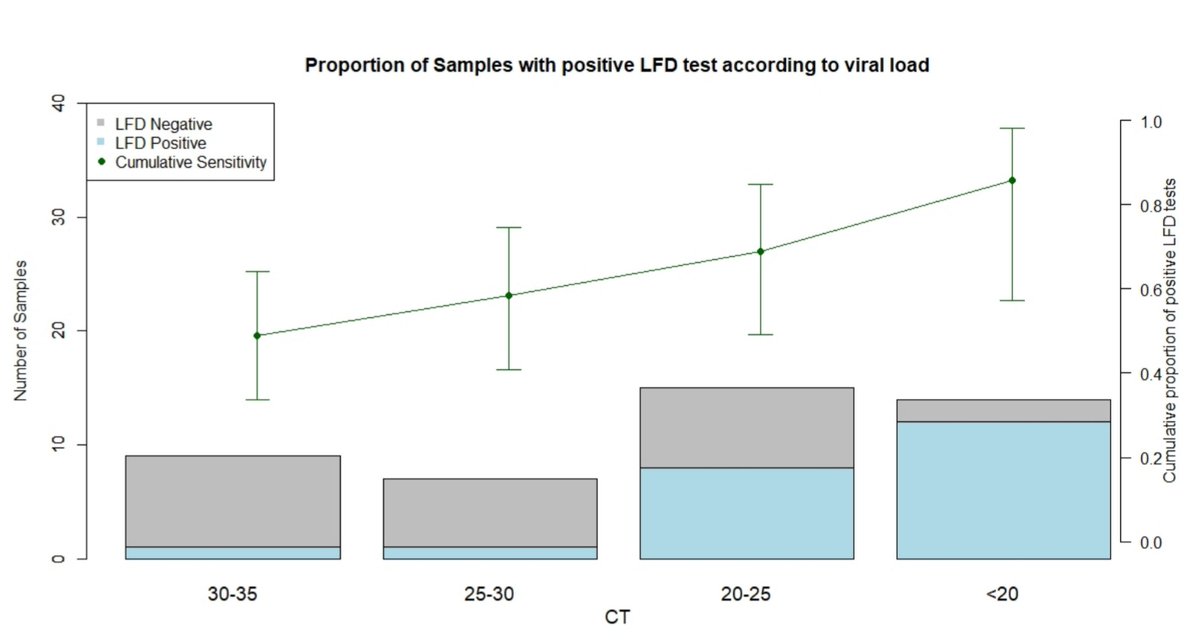
You'd think the Brexit Party would have other things on their mind at the moment, but instead they seem to have latched onto a misleading story about false positives.
Unsurprisingly it doesn't show what they think it shows.
Unsurprisingly it doesn't show what they think it shows.
https://twitter.com/TiceRichard/status/1336926377925341184
For starters, Cambridge are using pooled testing, which none of the regular test system is.
This means mixing several samples together to reduce the number of tests you need to run, then if a pool is positive you individually test everyone in that pool to see who had the virus.
This means mixing several samples together to reduce the number of tests you need to run, then if a pool is positive you individually test everyone in that pool to see who had the virus.
But a recent study suggests pooling causes false positives.
They tested 17,945 pools. 2,084 of them were positive. When they tested the people in those pools individually, they didn't get any positives from 92.
92 ÷ 17,945 = 0.5% false positive rate.
medrxiv.org/content/10.110…
They tested 17,945 pools. 2,084 of them were positive. When they tested the people in those pools individually, they didn't get any positives from 92.
92 ÷ 17,945 = 0.5% false positive rate.
medrxiv.org/content/10.110…

Going back to Cambridge, the week 9 results people are so excited about show that 11 of their 2,200 pools tested positive, but they didn't find individual positives in ANY of those pools.
11 ÷ 2,200 = 0.5%
Exactly the false positive rate for pooled testing found in the study.
11 ÷ 2,200 = 0.5%
Exactly the false positive rate for pooled testing found in the study.
So what we're seeing here isn't necessarily the false positive rate for PCR testing, it could be the false positive rate for pooled testing.
And because of the way pooled testing works, all of them were quickly identified and corrected by the second, individual tests.
And because of the way pooled testing works, all of them were quickly identified and corrected by the second, individual tests.
Ah, but 100% of the positives were false!
Yes, but that doesn't mean the false positive rate is 100%.
The false positive rate is the % of people you tested who didn't have the virus but tested positive anyway.
This should stay roughly the same over time.
Yes, but that doesn't mean the false positive rate is 100%.
The false positive rate is the % of people you tested who didn't have the virus but tested positive anyway.
This should stay roughly the same over time.
So looking again at the Cambridge data, in week 1 the false positive rate was 7 ÷ (1,832 pools - 11 true positives) = 0.4%.
Very similar to the 0.5% in week 9.
But in week 1 that resulted in only 39% of pools being false positives, whereas in week 9 it was 100%.
What happened?
Very similar to the 0.5% in week 9.
But in week 1 that resulted in only 39% of pools being false positives, whereas in week 9 it was 100%.
What happened?

A lot more people at Cambridge Uni had the virus 2 months ago.
Of the pools they tested, a similar proportion gave false positives in both weeks.
But in week 1 there were also 11 pools that were genuinely positive, whereas in week 9 they didn't find anyone with the virus.
Of the pools they tested, a similar proportion gave false positives in both weeks.
But in week 1 there were also 11 pools that were genuinely positive, whereas in week 9 they didn't find anyone with the virus.
And that's how false positives work.
In a week when nobody you tested had the virus, any small number of positives you get will be false.
But if 10% of people test positive, as has been the case in pillar 2 testing recently, very few of those positives will be false.
In a week when nobody you tested had the virus, any small number of positives you get will be false.
But if 10% of people test positive, as has been the case in pillar 2 testing recently, very few of those positives will be false.
• • •
Missing some Tweet in this thread? You can try to
force a refresh



















